5 Health Benefits Of Millets, Nutrition, & How To Add To Diet
Harness the power of millets to cultivate a healthier you and transform your plate into a canvas of health.
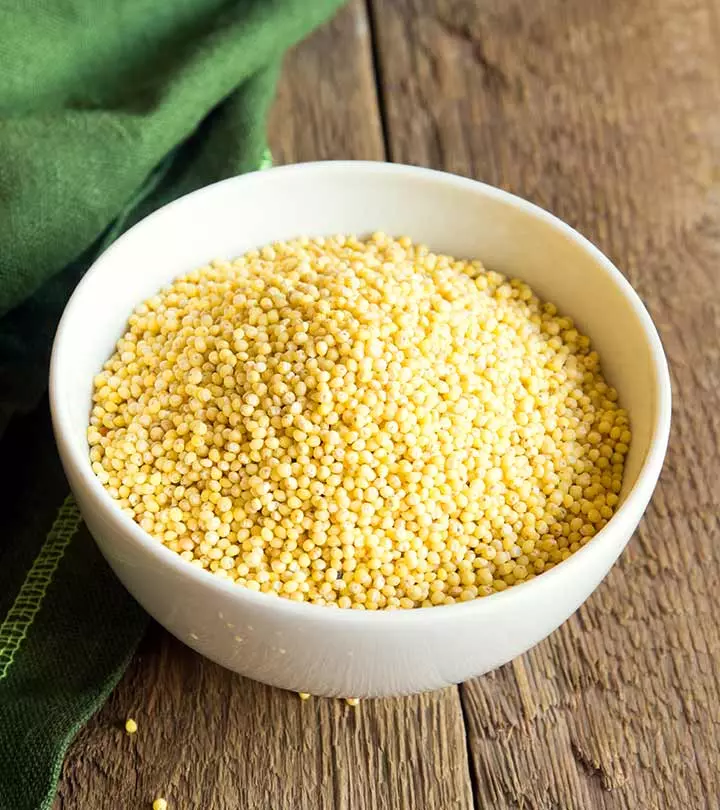
Image: Shutterstock
The benefits of millet are gaining the attention of many health enthusiasts as they are being popularized as a gluten-free substitute for other rice variants. These are very good sources of fiber, essential carbohydrates, and many other vital micronutrients. Millets are native to the eastern side of the world and are now being consumed in many countries for their important benefits.
Want to know more about them? Continue reading the article.
In This Article
What Are Millets?
Millets are whole grains that have been around for thousands of years and are found in many diets around the world. Millets are the leading staple grains in India and are commonly eaten in China, South America, Russia, and the Himalayas (1).
As gluten-free whole grains, millets are an excellent grain option for those in need of alternatives. They are super easy to prepare (you’ll know!) and more accessible across the globe.
Millets are incredibly versatile – they can be used in everything from flatbreads to porridges, side dishes, and desserts. Their delicate flavor is enhanced by toasting the dry grains before cooking. In some places, they’re even fermented and consumed as an alcoholic beverage.
Millets can be found in white, gray, yellow, or red colors. They look beautiful when arranged on a plate. Millets are also grown as high-fiber feed for cattle, livestock, and birds.
 Did You Know?
Did You Know?Scroll down to get a glance of the commonly grown millets around the world.
What Are The Commonly Found Types Of Millets?
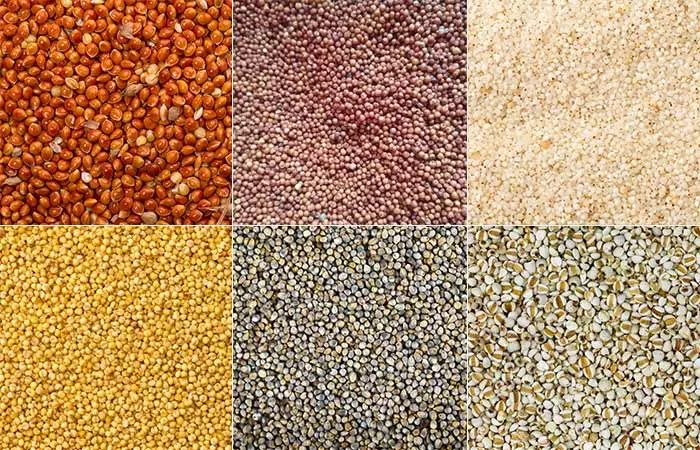
Millets are a group of grains that include pearl millet (Pennisetum glaucum ), foxtail millet (Setaria italica ), proso millet (Panicum miliaceum ), finger millet or ragi (Eleusine coracana ), barnyard millet (Echinochloa crus-galli ), little millet (Panicum sumatrense ), kodo millet (Paspalum scrobiculatum ), fonio millet (Digitaria exilis ), and adlay millet or Job’s tears (Coix lachryma-jobi ) (2).
 Fun Fact
Fun FactHere’s some more information about the different types of millets:
| Name | Local name | Grown in |
|---|---|---|
| Pearl millet | Bulrush millet (Australia), cat tail millet, bajra (Hindi), milheto (Brazil), gero (Africa), sajje (Telugu) | Africa, India, Pakistan, and the Arabian peninsula |
| Finger millet | Ragi (Telugu, Kannada), keppai (Tamil), mandwa (Urdu), kurakkan (Sinhala), nachani (Marathi), susu (Japanese), | Africa, Nepal, India, and China |
| Proso millet | common millet, broomtail, kashfi, hog millet | Ukraine, Kazakhstan, Argentina, U.S, and Australia |
| Foxtail millet | Kaon dana (Bengali), navane (Kannda), korralu (Telugu), kangni (Hindi), kavalai (Tamil), awa (Japanese), | China, India, Indonesia, the Korean peninsula, and Europe |
| Fonio millet | – | Western Africa |
| Barnyard millet | Cockspur grass | India |
| Little millet | Kutki (Hindi), sama (Bengali), gajro (Gujarati), samalu (Telugu), sava (Marathi), suan (Oriya) | India, Pakistan, Nepal, Sri Lanka, Indonesia, and Myanmar |
| Kodo millet | Arikelu (Telugu), varagu (Tamil), kodra (Hindi) | Western Africa, and India |
| Adlay millet | Job’s tears, YiYi (Chinese), coixseed, tear grass | Southeast Asia |
Let me share some more details about the heroes behind millets’ superpowers. Scroll down to know the nutritional and phytochemical profiles of millets.
Nutritional Profile Of Raw Millets
| Calorie Information | ||
|---|---|---|
| Amounts Per Cup (200g) Serving | %DV | |
| Calories | 756(3165 kJ) | 38% |
| From Carbohydrate | 600(2512 kJ) | |
| From Fat | 70.6(296 kJ) | |
| From Protein | 85.3(357 kJ) | |
| From Alcohol | ~(0.0 kJ) | |
| Carbohydrates | ||
| Amounts Per Cup (200g) Serving | %DV | |
| Total Carbohydrate | 146 g | 49% |
| Dietary Fiber | 17.0 g | 68% |
| Starch | ~ | |
| Sugars | ~ | |
| Fats & Fatty Acids | ||
| Amounts Per Cup (200g) Serving | %DV | |
| Total Fat | 8.4 g | 13% |
| Saturated Fat | 1.4 g | 7% |
| Monounsaturated Fat | 1.5 g | |
| Polyunsaturated Fat | 4.3 g | |
| Total trans fatty acids | ~ | |
| Total trans-monoenoic fatty acids | ~ | |
| Total trans-polyenoic fatty acids | ~ | |
| Total Omega-3 fatty acids | 236 mg | |
| Total Omega-6 fatty acids | 4030 mg | |
| Protein & Amino Acids | ||
| Amounts Per Cup (200g) Serving | %DV | |
| Protein | 22.0 g | 44% |
| Vitamins | ||
| Amounts Per Cup (200g) Serving | %DV | |
| Vitamin A | 0.0 IU | 0% |
| Vitamin C | 0.0 mg | 0% |
| Vitamin D | ~ | ~ |
| Vitamin E (Alpha Tocopherol) | 0.1 mg | 1% |
| Vitamin K | 1.8 mcg | 2% |
| Thiamin | 0.8 mg | 56% |
| Riboflavin | 0.6 mg | 34% |
| Niacin | 9.4 mg | 47% |
| Vitamin B6 | 0.8 mg | 38% |
| Folate | 170 mcg | 43% |
| Vitamin B12 | 0.0 mcg | 0% |
| Pantothenic Acid | 1.7 mg | 17% |
| Choline | ~ | |
| Betaine | ~ | |
| Minerals | ||
| Amounts Per Cup (200g) Serving | %DV | |
| Calcium | 16.0 mg | 2% |
| Iron | 6.0 mg | 33% |
| Magnesium | 228 mg | 57% |
| Phosphorus | 570 mg | 57% |
| Potassium | 390 mg | 11% |
| Sodium | 10.0 mg | 0% |
| Zinc | 3.4 mg | 22% |
| Copper | 1.5 mg | 75% |
| Manganese | 3.3 mg | 163% |
| Selenium | 5.4 mcg | 8% |
| Fluoride | ~ | |
Also, take a look at how the nutrients are distributed across various millet species and whole grains:
| Food | Protein (g) | Fat (g) | Ash (g) | Crude fibre (g) | Carbohydrate (g) | Energy (kcal) | Ca (mg) | Fe (mg) | Thiamin (mg) | Riboflavin (mg) | Niacin (mg) |
|---|---|---|---|---|---|---|---|---|---|---|---|
| Rice (brown) | 7.9 | 2.7 | 1.3 | 1.0 | 76.0 | 362 | 33 | 1.8 | 0.41 | 0.04 | 4.3 |
| Wheat | 11.6 | 2.0 | 1.6 | 2.0 | 71.0 | 348 | 30 | 3.5 | 0.41 | 0.10 | 5.1 |
| Maize | 9.2 | 4.6 | 1.2 | 2.8 | 73.0 | 358 | 26 | 2.7 | 0.38 | 0.20 | 3.6 |
| Sorghum | 10.4 | 3.1 | 1.6 | 2.0 | 70.7 | 329 | 25 | 5.4 | 0.38 | 0.15 | 4.3 |
| Pearl millet | 11.8 | 4.8 | 2.2 | 2.3 | 67.0 | 363 | 42 | 11.0 | 0.38 | 0.21 | 2.8 |
| Finger millet | 7.7 | 1.5 | 2.6 | 3.6 | 72.6 | 336 | 350 | 3.9 | 0.42 | 0.19 | 1.1 |
| Foxtail millet | 11.2 | 4.0 | 3,3 | 6.7 | 63.2 | 351 | 31 | 2.8 | 0.59 | 0.11 | 3.2 |
| Common millet | 12.5 | 3.5 | 3.1 | 5.2 | 63.8 | 364 | 8 | 2.9 | 0.41 | 0.28 | 4.5 |
| Little millet | 9.7 | 5.2 | 5.4 | 7.6 | 60.9 | 329 | 17 | 9.3 | 0.30 | 0.09 | 3.2 |
| Barnyard millet | 11.0 | 3.9 | 4.5 | 13.6 | 55.0 | 300 | 22 | 18.6 | 0.33 | 0.10 | 4.2 |
| Kodo millet | 9.0 | 3.6 | 3.3 | 5.2 | 66.6 | 353 | 35 | 1.7 | 0.15 | 0.09 | 2.0 |
| Oats | 17.0 | 6.0 | 2.6 | 11.0 | 66.0 | 390 | 54 | 4.7 | 0.22 | 0.12 | 3.2 |
Coming to the phytochemical composition, millets are packed with phenolic acids, polyphenols, anthocyanins, flavonoids, saponins, and lignans that give you all the protective benefits.
Millets and their seed coats have gallic acid, ferulic acid, protocatechuic acid, coumaric acid, cinnamic acid, caffeic acid, sinapic acid, quercetin, kaempferol, luteolin glycoside, phloroglucinol, apigenin, catechin, epicatechin, glucosylvitexin, glycovitexin, vitexin, and several other phytochemicals (5).
Woah! That’s a lot of nutrition in one grain! What do high-value foods like millets do to your body? What parts of your body do they help? Read on to find the answers.
Five Fundamental Benefits Of Adding Millets To Your Diet
1. Ideal For Individuals Who Have Diabetes
Compared to other cereal crops, such as wheat and maize, millets are high in nutrition, gluten-free, and have a glycemic index between 54 to 68.
They provide high energy, high dietary fiber, proteins with a balanced amino acid profile, many essential minerals, vitamins, and antioxidants – all of which play a substantial role in lowering diabetes.
Foxtail millets improve glycemic control and insulin sensitivity in such individuals. They also can reduce HbA1c antigen levels, fasting glucose, insulin, total cholesterol, triglyceride, and LDL concentrations.
These signs show that millets have a positive dietary impact on diabetes when supported with right medication (3).
2. Help In Weight Management

Obesity is a major cause of a variety of metabolic disorders. And diet plays a critical role in controlling obesity. Following a low-carb and high-fiber diet, along with regular physical activity, can reduce body weight to some extent.
Including whole grains like millets, brown rice, whole wheat, oats, barley, sorghum, etc. can have an incredible effect on the BMI (body mass index) of obese individuals.
Consuming about 3 servings of whole grains per day can also reduce fat accumulation, improve gut microbiota (good gut bacteria), and help you feel lighter and physically active (4). Pairing millets with other nutritious grains like oatmeal can amplify these benefits. Reading about the benefits of oatmeal, such as regulating digestion, and lowering cholesterol levels, can help you make a wholesome diet for yourself.
3. Lower Cholesterol And Protect Heart
Pearl, finger, kodo, and other varieties of millets are all rich in micronutrients like iron, zinc, phosphorus, and calcium, and amino acids such as leucine and valine.
Millets have polyphenolic acids, β-glucans, flavonoids, anthocyanidins, condensed tannins, lignans, and policosanols that are potent antioxidants. They also reduce the plasma LDL levels and total cholesterol and keep the blood vessels dilated and healthy.
In a study conducted to understand the effect of millet consumption on lipid profile, it was found that the level of total cholesterol decreased by 8% from 189.5 ± 27.7 to 174.8 ± 28.9 mg/dl for 870 subjects who consumed millet-based meals for 21 days to 4 months.
This way, consuming millets can prevent lipid peroxidation and associated cardiovascular diseases and ischemic strokes (5).
4. Healthy For Children And Pregnant Women

As millets contain fiber, protein, vitamins, and minerals like calcium and iron, they can be given to children and pregnant women.
Many traditional Asian and African dishes given to pregnant women prior to delivery contain millets. Kenyan women consume ugali, which is made from a mixture of sorghum and finger millet flour. It is cooked to a dough-like consistency and eaten with local vegetables, meat stew, or fermented milk (6).
Popped millets can be served as healthy snacks to children, especially if they are malnourished. Carbs, essential fatty acids, and calcium give children the strength and immunity they need while growing up (5).
5. Could Have Anti-Cancer Effects
Apart from antioxidant and antidiabetic effects, millets might possess anticancer effects too. Recent research points out that few millet proteins (from foxtail and proso varieties) could inhibit the growth of cancerous cells in various tissues.
Millet phytochemicals showed antiproliferative effects against cancer cells of the colon, breast, and liver without damaging the surrounding normal cells. The antioxidant phenolic acids and anthocyanidins make a promising remedy for many cancers. Further research in these areas can reveal more about the anticancer properties of millets (7), (8).
Millets, the grains of balance and health, offer a wealth of nutritional benefits. However, it’s essential to understand their potential downsides to ensure a balanced and informed consumption. Let’s explore further.
Potential Downsides Of Consuming Millets
- Compounds like phytic acid, found in millet, may hamper the absorption of minerals, including calcium, zinc, and iron (9). Millets can be soaked, fermented, or sprouted to lessen these effects.
- If taken in excess, many millets, notably pearl millet, have goitrogenic qualities that might affect thyroid function, especially in people who are iodine deficient (10).
- Although rare, some people may have allergies to certain types of millet (11). This is a reminder that, like any food, millets should be consumed with awareness and moderation.
How can you absorb all this goodness of millets? The simplest way is to add them to your food. Find out how!
Two Ways To Make Millets Tasty
Barring the boring porridge, you can try out these super simple, tasty, and quick ways of cooking millets. These dishes can make a great brunch or dinner. Check them out!
1. Vegan Millets – Curry Style!
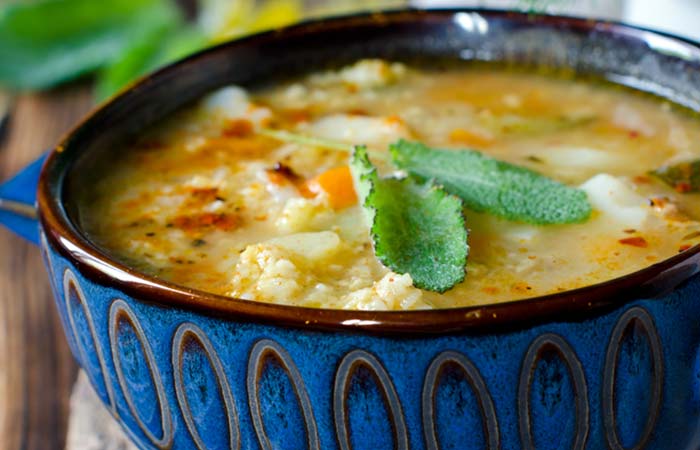
What You Need
- Millets: 1 cup
- Olive oil: 2 tablespoons
- Onion: 1, diced
- Garlic: 2 cloves, diced
- Water: 2½ cups
- Cumin: ½ teaspoon, ground
- Curry powder: 2 teaspoons
- Salt: 1 teaspoon or as required
- Skillet: medium-large sized
Let’s Make It!
- In a medium-sized bowl, add the millets and pour enough water over them to cover by at least 2 inches.
- Leave them open to soak the millets for 8 hours to overnight. Drain the water.
- In a skillet, heat olive oil over medium heat.
- Add the onion and garlic in the hot oil, and stir and cook them until onion is lightly browned (for 10 to 15 minutes).
- Mix the millets, two and a half cups of water, salt, and cumin into the onion mixture. Give them a slight stir.
- Cover and simmer until millets are tender and the water is absorbed. This might take about 20 minutes.
- Add the curry powder to cooked millets and stir well until they get thoroughly mixed.
- Squeeze a lemon wedge and sprinkle some chopped coriander.
- Serve hot with a cup of strong ginger tea!
2. Yummy Millet Muffins
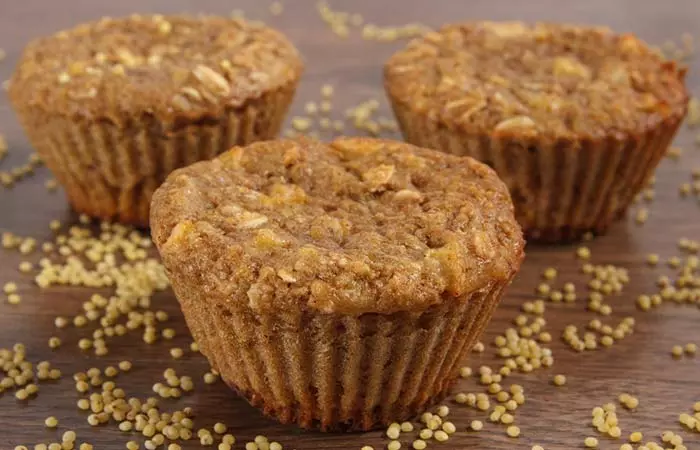
What You Need
- Whole wheat flour: 2¼ cups
- Millets: ⅓ cup
- Baking soda: 1 teaspoon
- Baking powder: 1 teaspoon
- Salt: 1 teaspoon
- Buttermilk: 1 cup
- Egg: 1, lightly beaten
- Vegetable oil: ½ cup
- Honey: ½ cup to 1 cup
- Mixing bowl: 2, medium-large sized
Let’s Make It!
- Preheat the oven to 400°F (200°C). Grease 16 muffin cups.
- In a large bowl, combine the whole wheat flour, millets, baking powder, baking soda, and salt.
- In a separate bowl, whisk together the buttermilk, egg, vegetable oil, and honey.
- Stir the buttermilk mixture into the flour mixture just until it is evenly moist. Whisk thoroughly.
- Transfer the batter to the greased muffin cups.
- Bake for 15 minutes in the preheated oven, or until a toothpick inserted in the center of a muffin comes out clean.
- Serve warm with some cranberry crush or piping hot black coffee!
Lynnet, a food blogger, wrote a blog on the various ways she used millet in cooking. She used it as a substitute for wheat, in all-purpose flour. She wrote, “Since I have celiac disease, wheat is out for me, but millet fits the bill perfectly as a substitute (i).” She also wrote, “I have used it alone in pancakes, but for most baking you would want to mix it with at least one more flour.”
 Quick Tip
Quick Tip3. Millet Pilaf – A Simple Delight
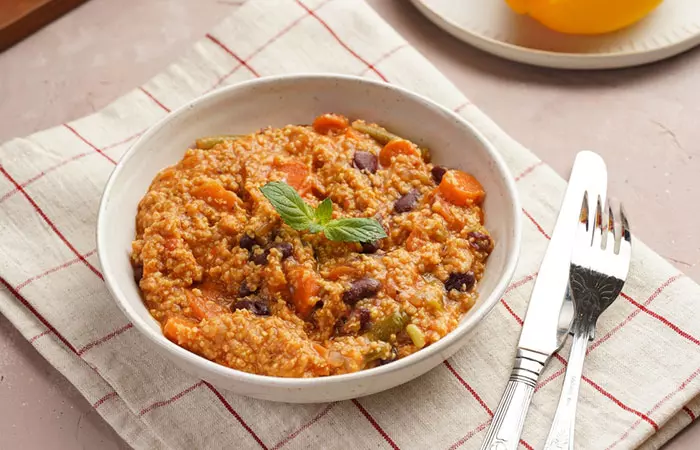
What You Need
- Millets: 1 cup
- 2 cups mixed vegetables: carrots, peas, corn
- Onion: 1, chopped
- Garlic: 2 cloves, minced
- Vegetable broth: 2 cups
- Olive oil: 1 tablespoon
- Salt and pepper as required
Let’s Make It!
- In a pot, heat olive oil over medium heat. Sauté chopped onion and minced garlic until they turn golden brown.
- Toss in mixed vegetables and cook for a few minutes until they start to soften.
- Add the rinsed millet to the pot. Stir well to coat the millet with the flavors.
- Pour in the vegetable broth, season with salt and pepper, and bring it to a gentle boil.
- Once boiling, reduce the heat to low, cover the pot, and let it simmer for about 20-25 minutes or until the millet is tender and has absorbed the liquid.
- Once cooked, fluff the millet with a fork. Garnish with fresh herbs if desired.
- Serve this hot millet pilaf.
The benefits of millets are numerous. They are loaded with various beneficial nutrients that exhibit health-promoting effects. In addition, they are gluten-free. They are beneficial for people with diabetes as they have a low glycemic index. Millets aid in weight management by reducing fat accumulation and improving gut microbiota. They also help promote cardiovascular health because of the presence of flavonoids, β-glucan, lignins, and tannins. They lower cholesterol levels too. Millets reduce the risk of cancer thanks to their antioxidant-rich profile. They are beneficial to pregnant women and children as they are rich in fiber, protein, vitamins, and minerals. They are versatile, easy to cook, and taste good. You can include millets as a part of your diet to reap the benefits they offer. Try any of the above-mentioned recipes to cook and enjoy millets in a healthy and tasty way.
Frequently Asked Questions
What happens if we eat millets daily?
Millets are an excellent source of essential nutrients. The daily consumption of millets can benefit your health in many ways.
Which millet is the healthiest?
Sorghum (jowar) is considered to be the healthiest millet.
Who should avoid millets?
People with thyroid problems should avoid millets. The gluten found in millets may alter digestive system functions and the absorption of thyroid hormones, leading to hypothyroidism when consumed in excess amounts.
Are millets better than oats?
No. Oats contain more fiber and protein than millets.
Key Takeaways
- Millets are gluten-free whole grains and contain essential nutrients such as fiber, carbohydrates, proteins, vitamins, and minerals.
- They have a relatively lower glycemic index and may help regulate blood sugar levels, improve insulin sensitivity, and reduce HbA1c levels in individuals with diabetes.
- Millets also contain antioxidants, polyphenolic acids, and other compounds that help lower cholesterol levels and reduce the risk of cardiovascular diseases.
- These grains have several varieties, such as pearl millet, kodo millet, proso millet, etc., and can be consumed as soups, stews, and porridge.
If you are on the lookout for a gluten-free alternative to rice and other grains, millets might just be the answer. This video serves as your guide to understanding the benefits of incorporating millets into your diet. Click on the play button to learn more.
Personal Experience: Source
StyleCraze's articles are interwoven with authentic personal narratives that provide depth and resonance to our content. Below are the sources of the personal accounts referenced in this article.
(i) Millet: the forgotten grainhttps://lovelandlocal.blogspot.com/2008/05/millet-forgotten-grain.html
References
Articles on StyleCraze are backed by verified information from peer-reviewed and academic research papers, reputed organizations, research institutions, and medical associations to ensure accuracy and relevance. Read our editorial policy to learn more.
- “Whole Grains A to Z” Oldways Whole Grains Council
- “Millets” Alternative Field Crops Manual, University of Wisconsin-Extension,
- “Dietary Interventions for Type 2…” Frontiers in Plant Science, US National Library of Medicine
- “The Role of Whole Grains in Body Weight…” Advances in Nutrition, US National Library of Medicine
- “Significance of coarse cereals in…” Journal of Food Science and Technology, US National Library of Medicine
- “Food beliefs and practices among the Kalenjin…” Journal of Ethnobiology and Ethnomedicine, US National Library of Medicine
- “Phytochemical and Antiproliferative Activity of…” PLoS One, US National Library of Medicine
- “A novel protein extracted from foxtail millet bran…” Toxicology letters, US National Library of Medicine
- “Reduction of phytic acid and enhancement of bioavailable micronutrients in food grains” US National Library of Medicine
- “Does consumption of pearl millet cause goiter? A systematic review of existing evidence” US National Library of Medicine.
- “Immediate-Type Respiratory Allergy to Millet-Containing Seed Mixture of Bird Food” US National Library of Medicine.
Read full bio of Kristen Arnold
Read full bio of Swathi Handoo
Read full bio of Ravi Teja Tadimalla
Read full bio of Himanshi Mahajan






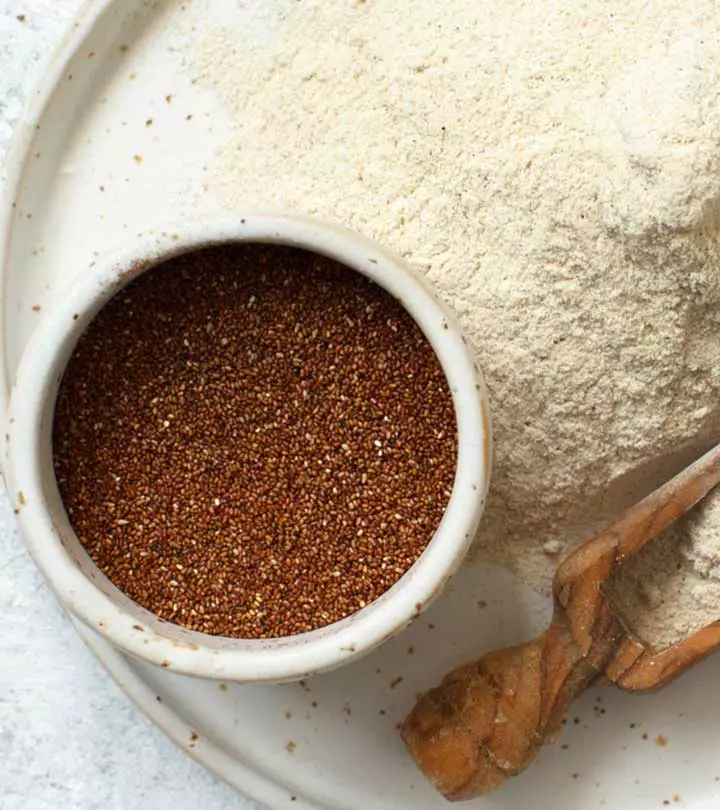
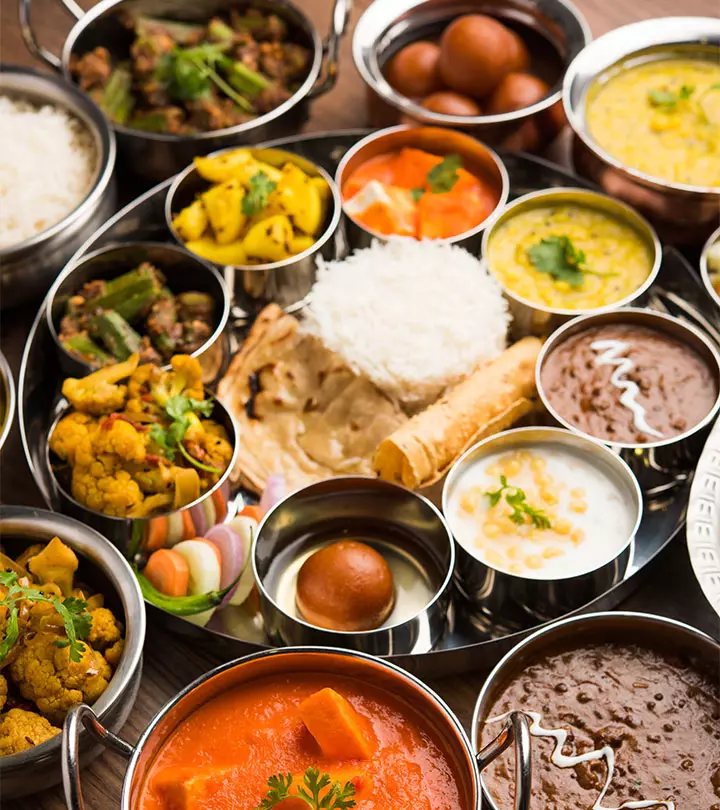
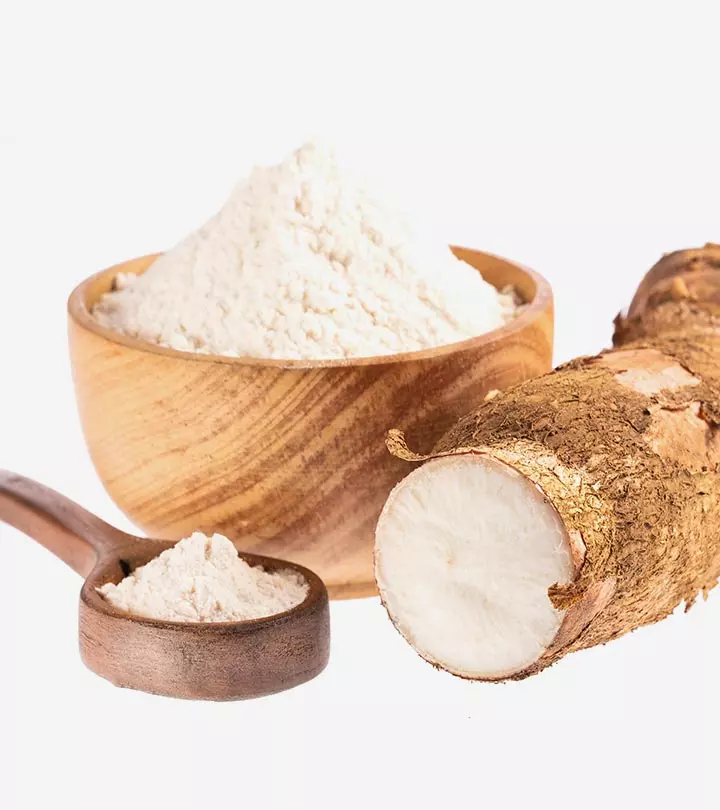
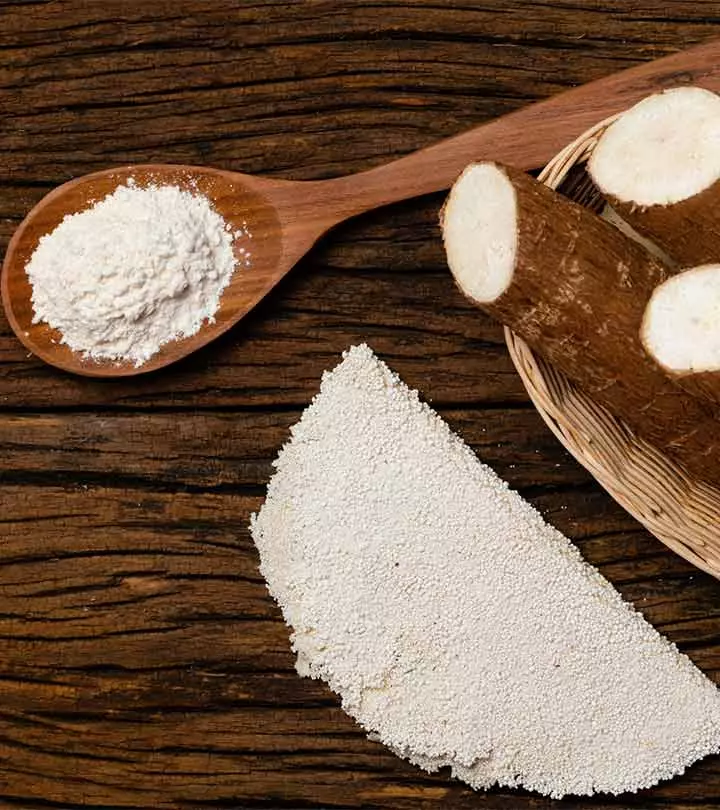
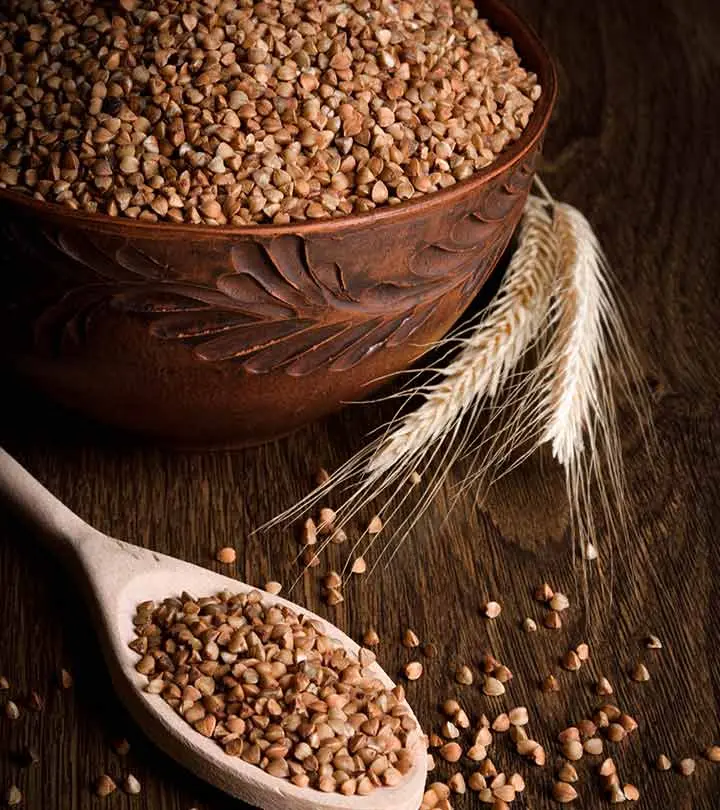


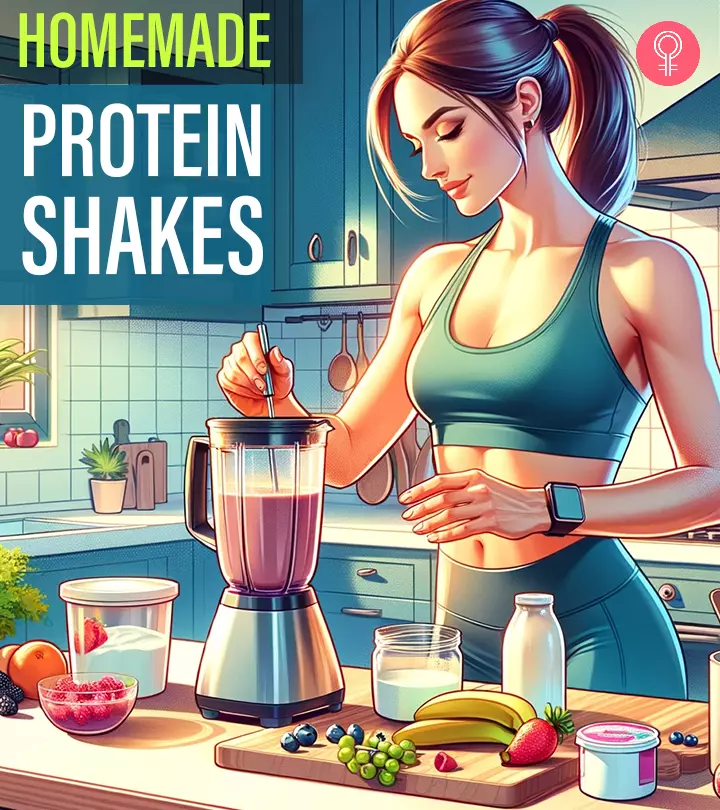
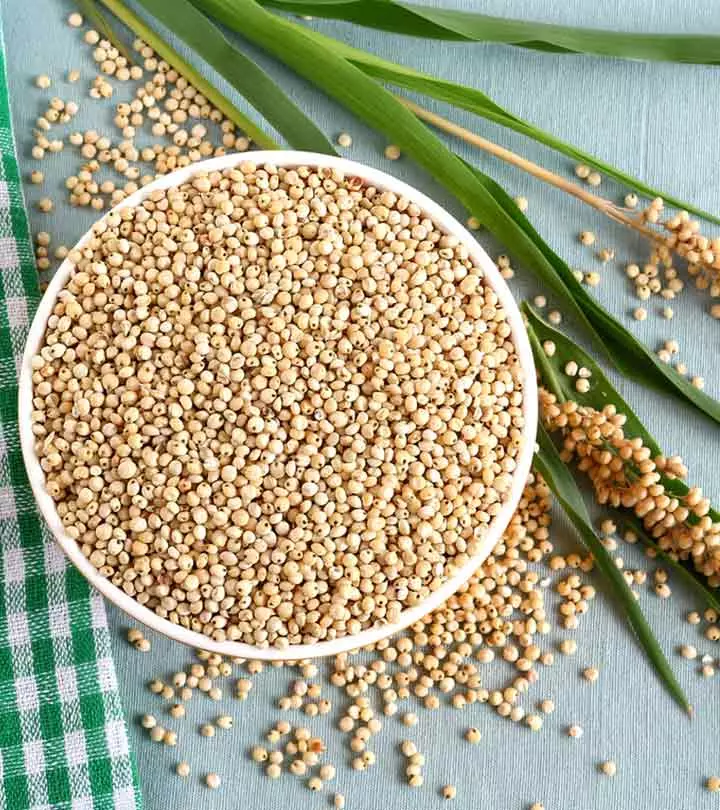
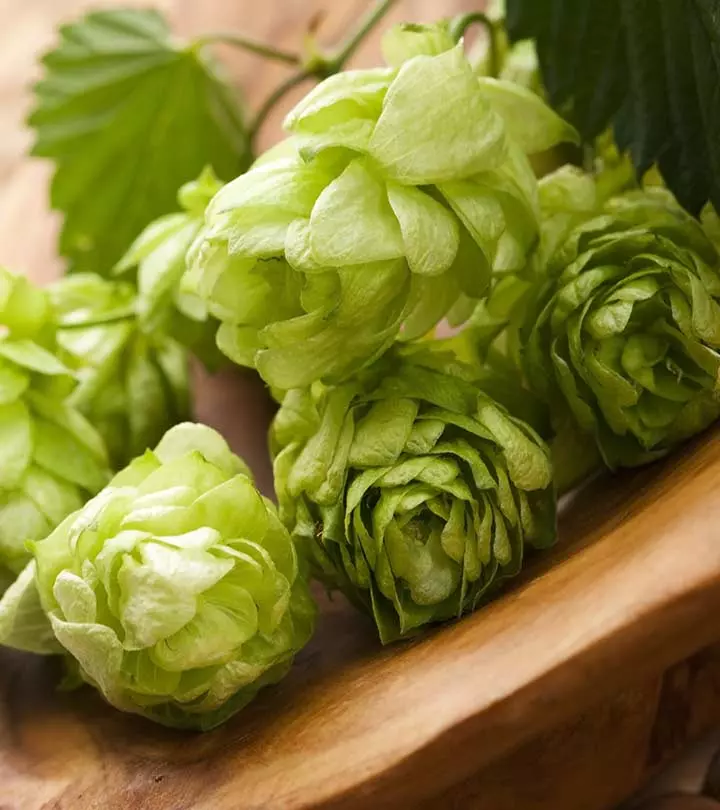
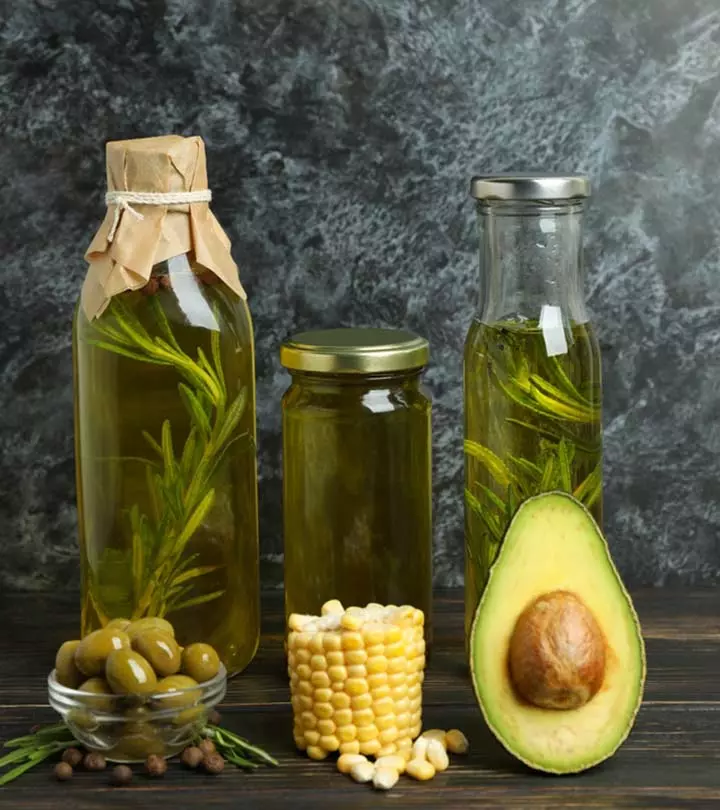
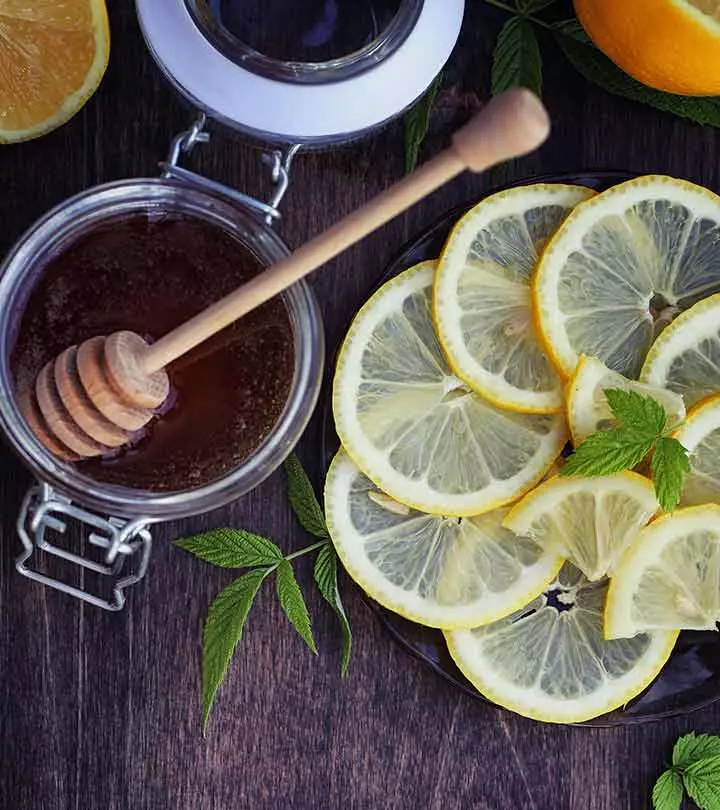
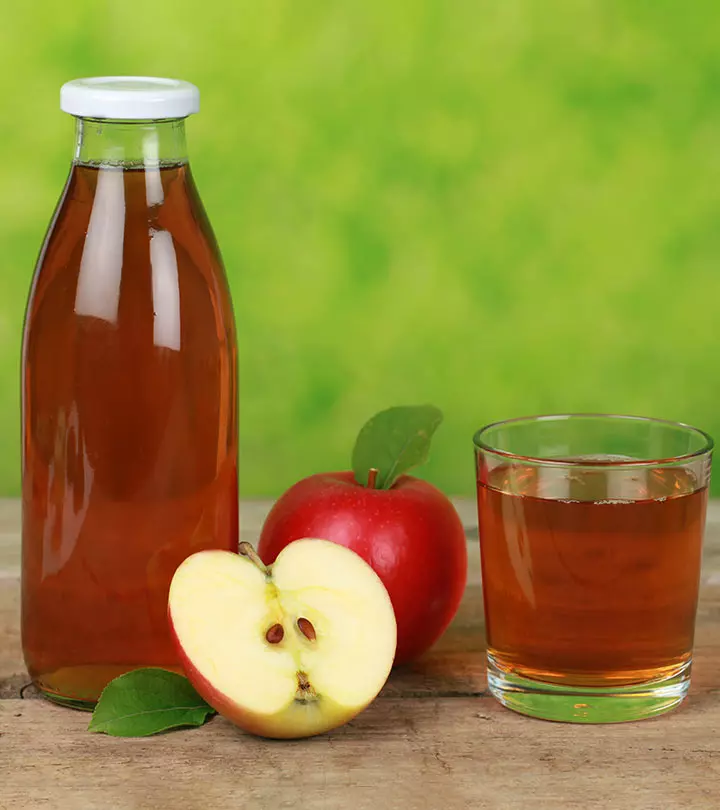
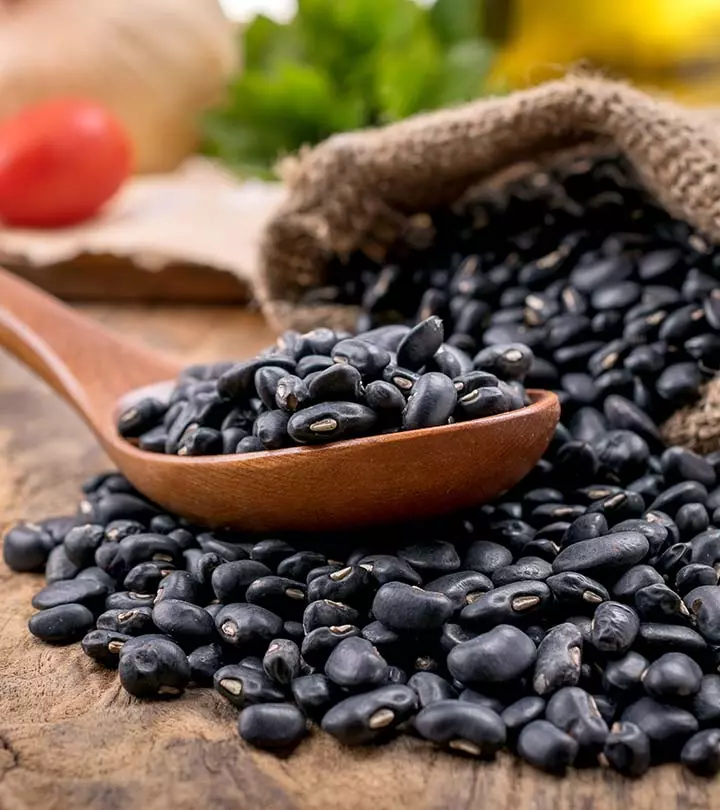







Community Experiences
Join the conversation and become a part of our empowering community! Share your stories, experiences, and insights to connect with other beauty, lifestyle, and health enthusiasts.